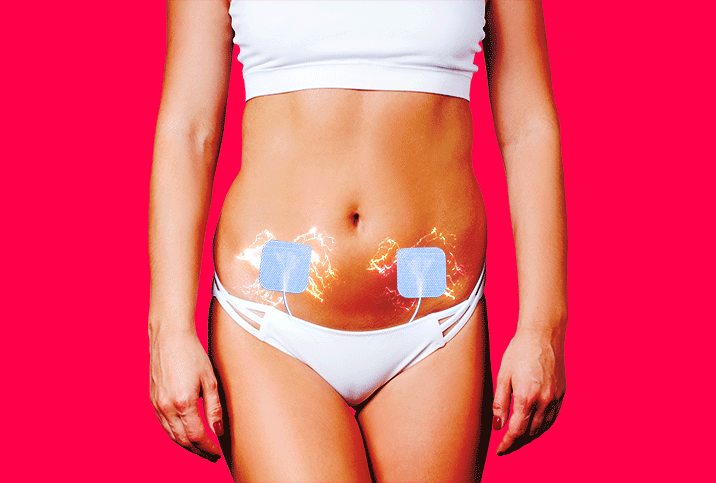The Medical Device Industry Remains Strong During Economic Downturns

Key Points
- The global self-care medical device market in 2023 is valued at approximately $22.3 billion.
- North America is a powerhouse, commanding 47.8 percent of the worldwide market share.
- Walgreens, Amazon and CVS Health have sought to rapidly expand their presence in the $4.3 trillion U.S. healthcare market in the past year.
Because of its essential nature, healthcare remains a priority in turbulent times. Med tech, in particular, has proven remarkably resilient, withstanding even the most severe crises—including the Great Recession of 2008 to 2009 and the COVID-19 pandemic.
"Around the globe, it's a pretty resilient industry," said Stephen T. Parente, Ph.D., M.P.H., a professor and the Minnesota Insurance Industry Chair of Health Finance, Carlson School of Management at the University of Minnesota in Minneapolis.
Professional healthcare providers remain the primary consumers of advanced medical technologies, but self-care medical devices have become increasingly prevalent and their place in the market has become progressively pronounced.
These products can be incredibly valuable to patients, providing a means to prevent or manage conditions from the comfort of home without the cost and inconvenience associated with visiting a doctor's office or hospital. They run the gamut from glucose monitors and pedometers to nebulizers and devices to treat erectile dysfunction (ED). They serve needs as diverse as their consumers.
Many of these devices appear simple compared to more advanced medical technologies, but their crucial role in supporting patients' health, well-being and quality of life cannot be overstated.
Healthcare market research shows positive trends in 2023
The global self-care medical device market in 2023 is valued at approximately $22.3 billion, according to an August 2023 report by Coherent Market Insights. By 2030, it's expected to reach $38.4 billion based on current data and historical trends.
Several factors will likely contribute to this growth, including a wave of new product approvals from major administrative bodies, including the U.S. Food and Drug Administration (FDA), according to the report.
One of the industry's greatest strengths is its global reach, which frees it from dependence on any one market. However, North America is a powerhouse, commanding 47.8 percent of the worldwide market share, per the report. Expected approvals are projected to cement the region's position.
Noteworthy acquisitions by key industry players and major companies' desire to diversify their product portfolios will also continue propelling progress, according to the report.
Recommended
- How Can We Improve Our Sexual Health?: Whether you're talking to the doctor or your partner, you need to start advocating for yourself.
- Eddie Makes All the Difference: Perform at your peak again using the trusted and tested ED device. Eddie is over 95 percent affection for treating erectile dysfunction. Find out how.
- How the Night Shift Affects Your Sex Life and Sexual Health: Your job may require you to work into the early morning, which can wreak havoc in the bedroom.
For example, major retailers, including Walgreens, Amazon and CVS Health, have sought to rapidly expand their presence in the $4.3 trillion U.S. healthcare market in the past year, according to Insider Intelligence. These companies and others have partly done so by spending billions of dollars on strategic acquisitions. Additionally, they have broadened product offerings to better compete with conventional healthcare providers and fulfill consumers' unmet needs. A substantial portion of these new products includes self-care medical devices and telehealth services.
The following are among the most prominent names in the self-care medical device industry today, according to Coherent Market Insights:
- 3M Healthcare
- Abbott Laboratories
- Bayer AG
- F. Hoffmann-La Roche
- GE Healthcare
- Johnson & Johnson
- Medtronic Inc.
- Omron Health
- Philips Healthcare
- ResMed Inc.
Medtronic, a longtime global leader in medical technology, is one example of the industry's ability to withstand even the roughest economic climates through innovation, agility and a consumer-focused approach, according to Parente. During the Great Recession, the worst economic downturn in recent history, Medtronic "didn't skip a beat" and continued to thrive.
"They came up with new product innovation and went even bigger into the neuro space than they had previously," he said. "In 2008, right as the economy was crashing, they hosted one of the biggest receptions ever when the Republican GOP was in town in St. Paul."
Parente noted that American tech companies today have several advantages. For one, the economy is still "fairly robust." Compared to 2008, healthcare costs generally aren't mushrooming at the same rate, and consumers have more cash.
Moreover, innovations and interest in medical technologies—including self-care devices—have escalated in the past decade.
Why is this industry so resilient?
Its global nature is essential, but the medical device market's historic resilience can be attributed to unwavering demand and the industry's agility in meeting consumer needs with new and improved products, according to experts. Consumer demographics also play a role.
Parente listed four reasons the medical device market continues to be so strong.
1. Americans are more health-conscious than ever
Health and healthcare have always been top-of-mind for many Americans. Nearly 60 percent of people in the United States have at least one chronic health condition, and 40 percent have two or more, according to the National Association of Chronic Disease Directors (NACDD).
Even those who aren't currently ill have become more health-conscious, particularly since the COVID-19 pandemic.
About 60 percent of Americans report being more concerned about their health than they were before the pandemic, according to the World Economic Forum. In an annual poll of 2,201 adults conducted by the American Psychiatric Association (APA) in 2023, 37 percent of adults report feeling more anxious than they were at the same time last year, an increase of 5 percent since 2022.
Following concerns about personal and familial safety and identity theft, health and personal finances were the two most frequently cited sources of anxiety. They affect 66 percent and 65 percent of respondents, respectively.
"Multiple studies indicate the pandemic changed people's priorities, prompting a greater emphasis on personal health," Parente said. "It also forced folks to research their options more thoroughly and substantially increased awareness of self-care and telemedicine."
Are You Having a Hard Time Getting Out of Your Head...in Bed?: Here are 8 strategies that will help you avoid being distracted during sex.
2. The population is aging
Data indicates that millennials and Gen Z members tend to be more health-conscious than their elders, according to Texas Health. However, older adults—an increasingly substantial portion of the population—tend to face more life-altering ailments that require regular management and monitoring.
According to the World Health Organization (WHO), the number of people ages 60 years or older is now more than 1 billion and is expected to reach 2.1 billion by 2050.
"[Almost] every country in the world has an aging population," Parente said. "Medical devices play a major role in keeping that population functional."
A proportion of older adults consistently name maintaining independence and autonomy as being among their top concerns. Research indicates these factors can dramatically influence a person's quality of life. Self-care medical devices—glucose monitors or mobility aids, for example—are crucial to supporting these needs.
Even devices that support sexual vitality can significantly improve older peoples' overall health and well-being, according to multiple studies linking sexual health to benefits such as better mental health and a reduced risk of heart disease and prostate cancer.
3. Healthcare costs are rising
While people are investing more in their health and wellness, the sometimes overwhelming cost of healthcare in the U.S. remains a barrier for many. This is primarily problematic when it comes to accessing pharmaceuticals and professional services, according to Parente.
According to the Peter G. Peterson Foundation, healthcare accounted for 5 percent of GDP in 1960 and 18 percent in 2021, a significant increase relative to the size of the economy. In 2021, healthcare spending in the U.S. rose by 2.7 percent, amounting to roughly $4.3 trillion or $12,914 per person, per the U.S. Centers for Medicare and Medicaid Services (CMS).
At the same time, access to healthcare providers—particularly for in-office visits—is limited due to an increasingly severe doctor shortage and rising demand for services. In 2022, it took 24 percent longer to schedule an appointment in 15 major U.S. cities compared to 2004 and 8 percent longer than in 2017. That's according to a 2022 survey by AMN Healthcare and its physician search division, Merritt Hawkins.
Consumers must now wait an average of 26 days for an introductory new patient appointment with a primary care physician. Patients in more rural areas and those waiting for specialist services may need to wait much longer.
As a result, consumers are seeking alternatives to conventional treatment, including self-care medical devices.
Fear and Arousal: Why Does Fear Turn Me On?: If you're thinking of adding an element of fear to spice up your sex life, read this now.
4. Technology and medicine continue to advance
Parente noted that technological advancements have also played a crucial part in the industry's tenacity. Innovations such as wearable technology, telemedicine and AI-driven devices have revolutionized how people manage their health, making self-care more accessible and effective than ever.
"It's proven to be fairly resilient because the pace of innovation inside the market is still pretty rapid," Parente said.
Also, the industry has diversified its offerings, he explained. In the past 30 to 40 years, the cardiac space has been the focus of most medical technology innovation. While cardiac applications continue to evolve, many companies have applied similar technologies and ideas to innovate in other spaces, from neurology to endocrinology and digestive health to sexual health.
These advances in technology and medicine have produced net positives for all health and wellness industry stakeholders, Parente added. At the same time, demand for even better, less intrusive products and services persists, and consumers and governments remain willing to pay.
The bottom line
One of the prevailing facts about healthcare is its proven ability to withstand difficult economies.
The self-care medical device industry, specifically, is projected to continue thriving thanks to factors such as its universal appeal, the growing demand for accessible, affordable and personalized solutions, and continually advancing technologies.
As the med tech industry continues to innovate and adapt, it's likely to remain resilient, empowering consumers to take control of their health, regardless of the economic climate.
"It should be very positive going forward," Parente said.


















